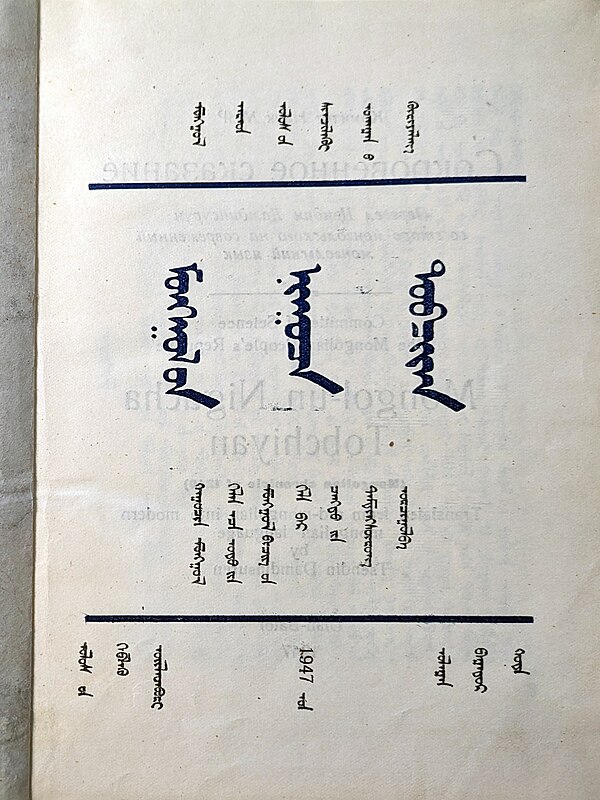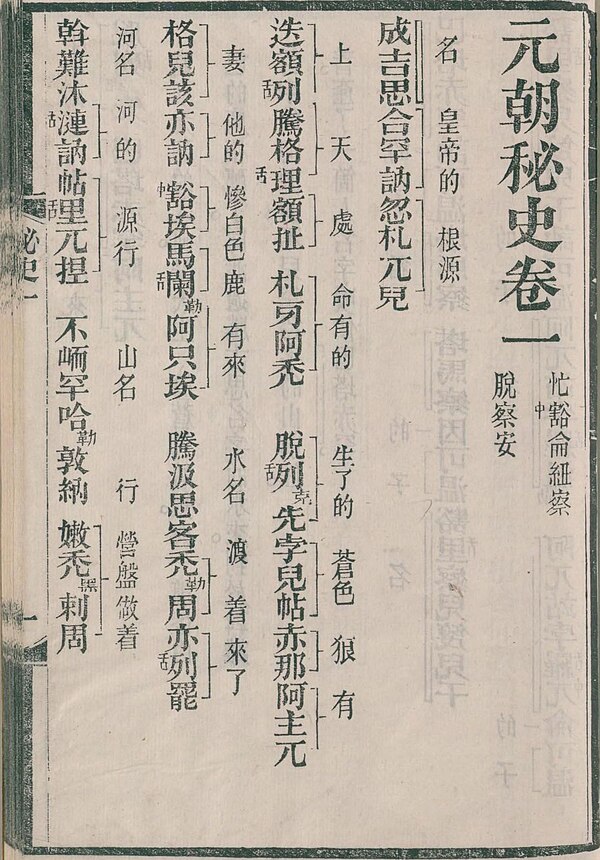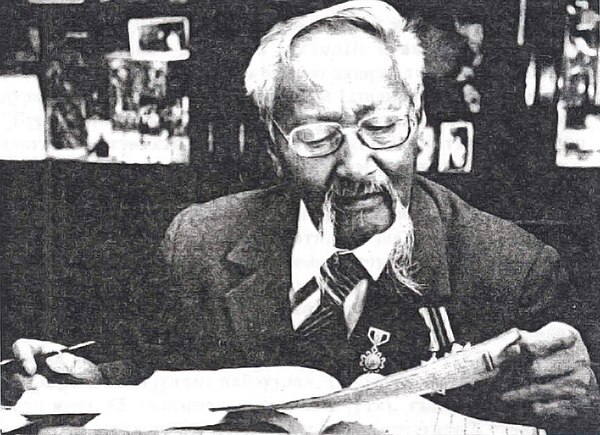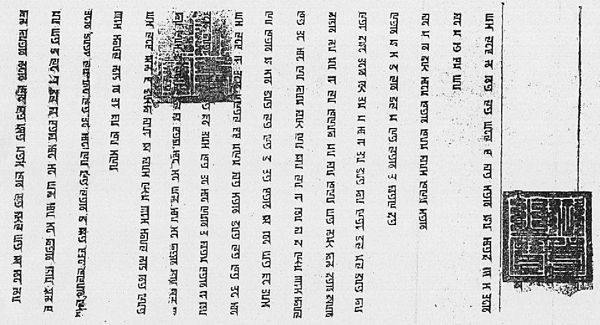Secret History of the Mongols
Videos
Page
The Secret History of the Mongols is the oldest surviving literary work in a Mongolian language. Written for the Mongol royal family some time after the death of Genghis Khan in 1227, it recounts his life and conquests, and partially, the reign of his successor Ögedei Khan.

1947 edition in modern Mongolian script, translated by Tsendiin Damdinsüren

Initial pages of the Secret History published in 1908 by Ye Dehui. The rows with large characters represent Mongolian phonetic transcription in Chinese characters, with the right-hand smaller characters representing the glosses

Palladius, a Russian monk who was the first to translate the work into a foreign language

Tsendiin Damdinsuren, author of the 1947 adaptation into modern Mongolian
Mongolian language
Videos
Page
Mongolian is the principal language of the Mongolic language family that originated in the Mongolian Plateau. It is spoken by ethnic Mongols and other closely related Mongolic peoples who are native to modern Mongolia and surrounding parts of East and North Asia. Mongolian is the official language of Mongolia and Inner Mongolia and a recognized language of Xinjiang and Qinghai.

Edict of Yesün Temür Khan, Emperor Taiding of Yuan (1328). Only the 'Phags-pa script retains the complete Middle Mongol vowel system.

Nova N 176 found in Kyrgyzstan. The manuscript (dating to the 12th century Western Liao) is written in the Mongolic Khitan language using cursive Khitan large script. It has 127 leaves and 15,000 characters.

Mongolian script and Mongolian Cyrillic on Sukhbaatar's statue in Ulaanbaatar